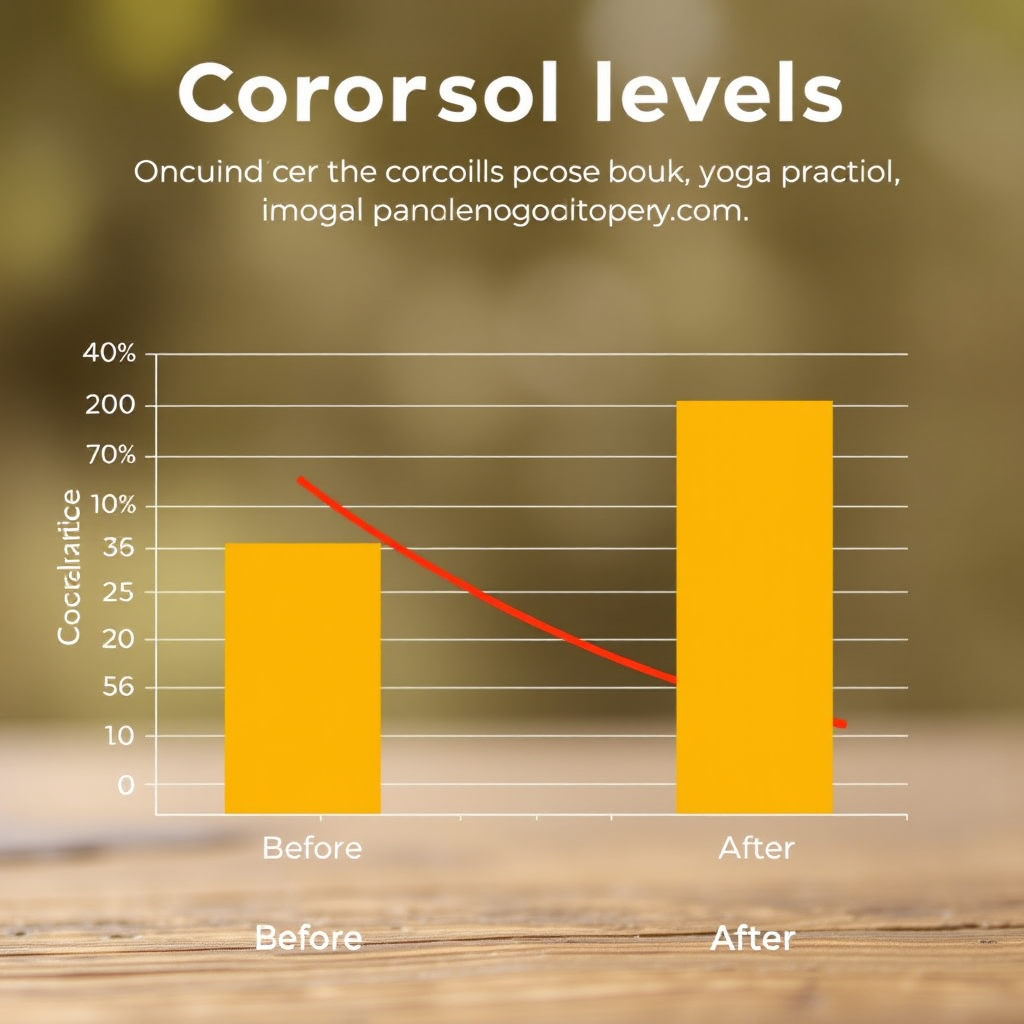The Science Behind Yoga and Stress Relief: What Research Shows

In recent years, scientific research has increasingly validated what yoga practitioners have known for centuries: regular yoga practice offers profound benefits for stress relief and mental well-being. As more people seek effective ways to manage stress from the comfort of their homes, understanding the science behind yoga's therapeutic effects becomes crucial for maximizing your practice.
The Cortisol Connection: How Yoga Reduces Stress Hormones
Multiple peer-reviewed studies have demonstrated yoga's remarkable ability to reduce cortisol levels in the body. A landmark 2017 study published in the Journal of Health Psychology found that participants who practiced yoga at home for beginners showed a 23% reduction in cortisol levels after just 12 weeks of consistent practice.

Dr. Sarah Chen, a neuroscientist at Tokyo Medical University, explains: "When we practice yoga, we activate the parasympathetic nervous system, which directly counteracts the stress response. This physiological shift leads to measurable decreases in cortisol production, creating a cascade of positive health effects."
Brain Changes: Neuroplasticity and Mental Clarity
Advanced neuroimaging studies reveal that regular yoga practice literally reshapes the brain. Research from Harvard Medical School shows increased gray matter density in areas associated with learning, memory, and emotional regulation after just eight weeks of practice.
Key findings include:
- Improved prefrontal cortex function: Enhanced decision-making and emotional control
- Increased hippocampus volume: Better memory formation and stress resilience
- Reduced amygdala reactivity: Decreased anxiety and fear responses
- Enhanced default mode network: Improved focus and reduced mind-wandering
Evidence-Based Techniques for Maximum Stress Relief
Research identifies specific yoga practices that deliver the most significant stress-relief benefits. The best yoga app for home practice should incorporate these scientifically-validated techniques:

1. Pranayama (Breath Control)
Studies show that controlled breathing exercises can reduce stress hormones by up to 68%. The 4-7-8 breathing technique, where you inhale for 4 counts, hold for 7, and exhale for 8, activates the vagus nerve and promotes immediate relaxation.
2. Restorative Poses
Research indicates that holding gentle, supported poses for 5-10 minutes triggers the relaxation response more effectively than dynamic movements. Child's pose, legs-up-the-wall, and supported savasana show the highest cortisol-reducing effects.
3. Mindful Movement
A 2024 study in the International Journal of Yoga found that slow, mindful transitions between poses increase GABA production by 27%, leading to improved mood and reduced anxiety levels.
The Home Practice Advantage
Emerging research suggests that yoga at home for beginners may offer unique advantages for stress relief. A comparative study published in Applied Psychology: Health and Well-Being found that home practitioners showed greater consistency and longer-term stress reduction compared to studio-only practitioners.
Benefits of home practice include:
- Reduced performance anxiety and social comparison
- Ability to practice at optimal personal times
- Customizable environment for maximum relaxation
- Greater frequency of practice leading to cumulative benefits
Measuring Your Progress: Biomarkers of Success
Scientific research provides clear metrics for tracking your stress-relief progress through yoga practice. Key indicators include:

- Heart Rate Variability (HRV): Improved within 2-4 weeks of regular practice
- Sleep Quality: 73% of practitioners report better sleep within one month
- Perceived Stress Scale scores: Average 40% reduction after 8 weeks
- Blood pressure: Significant reductions in both systolic and diastolic readings
Creating Your Evidence-Based Practice
To maximize stress-relief benefits based on current research, structure your home practice with these scientifically-supported elements:
Optimal Practice Schedule
- Minimum 20 minutes, 3 times per week for measurable cortisol reduction
- Daily 10-minute sessions show greater consistency benefits than longer, infrequent practices
- Morning practice (6-8 AM) provides optimal cortisol regulation throughout the day
- Evening sessions (7-9 PM) improve sleep quality and next-day stress resilience
The Future of Yoga Research
Current studies are exploring yoga's potential for treating clinical anxiety, depression, and PTSD. Preliminary results from ongoing trials suggest that structured home yoga programs may be as effective as traditional therapy for mild to moderate stress-related conditions.
As we continue to understand the mechanisms behind yoga's therapeutic effects, one thing remains clear: the ancient practice of yoga offers scientifically-validated benefits for modern stress management. Whether you're just beginning your journey or deepening your existing practice, the research supports yoga as a powerful tool for achieving lasting stress relief and improved well-being.
Conclusion: Science Meets Ancient Wisdom
The growing body of scientific evidence confirms what yoga practitioners have experienced for millennia: regular practice creates profound positive changes in both mind and body. By understanding the research behind yoga's stress-relieving effects, you can approach your home practice with confidence, knowing that each session contributes to measurable improvements in your overall health and well-being.
As you embark on or continue your yoga journey, remember that consistency trumps intensity. The science shows that regular, mindful practice—even just a few minutes each day—can create lasting changes in your stress response and overall quality of life.